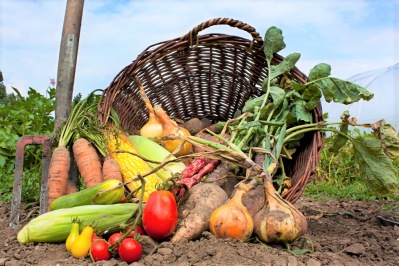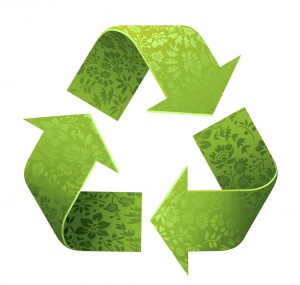How to Reduce Your Carbon Footprint in 2020: 20 Easy Tips
23 January 2020
With the recent media surge around pollution and climate change, people are becoming more environmentally-aware – and making conscious decisions in their daily lives to help reduce their carbon footprint.
In 2020, ‘being environmentally-friendly’ is a strong contender in the top ten New Year’s resolutions list. Whether you’re looking to go ‘zero waste,’ cut out plastics, or just make a few small changes to your daily life, as a nation we can create a big impact.
If you’re looking for inspiration, we’ve put together 20 easy tips on how to reduce your carbon footprint in 2020.
1. Insulate Your Home
One of the first steps to reducing your carbon footprint is to ensure your home is well-insulated. Insulation will maximize your use of energy, helping to keep your home warmer in the Winter and cooler in the Summer. This means you will use less energy, reduce energy wastage and save money on your power bills.
Studies indicate that good insulation can cut in-home energy usage by up to half. There are multiple types of insulation, so start by finding out what insulation your home already features – and then look at ways to further improve your insulation.
Roof and wall insulation is the most important, as this is where the majority of heat is lost in Winter / gained in Summer, so focus on this first.
Then consider double-glazing. Unlike homes in cooler climates, most Australian homes do not feature double-glazing – even though it not only reduces heat loss in Winter, but also insulates your home from heating up in Summer. This energy-efficient choice also offers the added bonus of minimising noise and increasing security.
The easiest and most economical time to insulate your home is during construction. But if your home is already built and your budget is limited, there are some cheap, quick ways to improve your insulation:
- DIY roof insulation: adding foam or reflective foil to your attic is a cost-effective alternative to engaging the professionals.
- Seal air leaks: seal any air leaks in your door or windows with weatherproofing strips or caulking.
- Add curtains: thick curtains help to retain the heat within your home during the Winter months. If you don’t want to fork out for new curtains, add a liner or blackout to your existing curtains.
- Fix draughty doors: draughts emanating through the bottoms of doors can be fixed by using a door snake.
- Install a chimney draught stopper: a chimney draught stopper is easily trimmed to shape and can be inserted into the throat of your chimney, to conserve heat and reduce draughts.
2. Switch Off Lights & Appliances
Energy conservation is one of the most important things you can do to reduce your carbon footprint. Leaving your lights on and electricals on standby uses up energy unnecessarily, so hit the ‘off’ switch!
Appliances which aren’t being used should remain unplugged or switched off at the wall. Investing in a ‘smart’ power strip will help to reduce phantom power usage. ‘Smart’ power strips work by shutting down power to items that go into standby mode.
Not only will you save energy, but you will also save money on your energy bill!
3. Use Energy-Efficient Lightbulbs
Energy-efficient (or energy-saving) lightbulbs last up to 12 times as long as traditional light bulbs and can reduce energy consumption by a whopping 80-90%.
Not only do they shine brighter than traditional bulbs, but they also require less energy to power them – meaning you save on electricity, decrease your carbon dioxide emissions and reduce your carbon footprint. What’s not to like?!
4. Low-Emissions Laundry
By doing a full-load of washing once a week, as opposed to two small loads twice per week, you will instantly halve the carbon emissions you produce from your laundry. 
Wash with cold water and use environmentally-friendly detergents and fabric softeners. Remove stains with salt, vinegar and baking soda, as opposed to the chemical-packed conventional products.
You can increase your tumble-dryer’s efficiency simply by emptying the lint trap before each load.
Best of all, hand-wash your clothing and – weather-permitting – dry your garments on a clothesline.
5. Fill Your Dishwasher – to the Brim
Only run the dishwasher with a full-load. A less-than-full load will use just as much power and water, so wait until the load is full. Running the dishwasher less frequently will mean you save on energy, save on water and save on dollars!
6. Swap Baths for Showers
Baths naturally use more water than showers, so opt for showers over baths. Take shorter showers or install a low-flow showerhead to conserve water. And you’ll thank yourself when you see your next water bill!
7. Fix Your Caffeine Fix
Disposable cups are one of Australia’s biggest landfill culprits. As they don’t biodegrade, they clog up landfill and become a major pollution hazard.
Our nation’s caffeine addiction is responsible for 1 billion disposable coffee cups each year, so rather invest in your own reusable coffee cup (‘keep cup’) or flask.
8. Buy Your Own Water Bottle
Did you know plastic bottles are one of the most frequently found items on beach clean-ups around the world? And the plastic lids often end up in the stomachs of seabirds.
So, ditch the disposable water bottles and instead buy your own reusable one.
9. Avoid Disposable Plastic Crockery & Cutlery
With our sunny climate, we are big picnic lovers here in Australia. But disposable plastic plates, cutlery and food containers pollute the environment and endanger wildlife, so rather switch to reusable alternatives.
10. Swap Cling Wrap for Beeswax Wrap
Unlike cling wrap, beeswax wraps are biodegradable, compostable and reusable, offering a planet-friendly, 100% natural solution to food storage. Made from beeswax and natural fabric (usually cotton or hemp), they contain natural antibacterial and antifungal properties. And being water-tight, they lock-in moisture and preserve your food in much the same way as cling wrap.
11. Eat Less Meat
Livestock accounts for between 14.5 and 18 percent of human-induced global greenhouse gas emissions. And a study conducted by the Intergovernmental Panel on Climate Change (IPCC), shows that our high consumption of meat and dairy produce is  fueling global warming.
fueling global warming.
According to Joseph Poore of the University of Oxford, “A vegan diet is probably the single biggest way to reduce your impact on planet Earth, not just greenhouse gases, but global acidification, eutrophication, land use and water use.”
So, cut down on your meat and focus on a plant-based diet.
12. Source Locally-Produced Food
Transporting food across long distances uses fossil fuels for fuel and for refrigeration to prevent produce from spoiling. So, source locally-produced foods that are in season and support your nearby farmers. Or grow your own food!
13. Don’t Waste Food
Most food waste ends up in landfill and as it rots, it produces methane, a greenhouse gas more potent than carbon dioxide. Shockingly, an estimated one-third of all food produced in the world goes to waste.
Do your bit to reduce food waste by planning meals ahead, only buying the ingredients you need and freezing or eating leftovers the following day.
14. Start Composting
Composting is a great way to make use of food scraps and reduce waste which would otherwise end up in landfill.
And your garden will love you for it! As your soil feeds on the organic waste, it will become more nutrient-rich and hold more moisture – which will benefit your plants!
15. Avoid Plastic Bags
Shop with reusable shopping bags and avoid the use of plastic bags in the fruit and veg section. 
16. Don’t Waste Paper
Print double-sided and use scrap paper for writing notes.
17. Invest in Renewable Energy
OK, so this isn’t a quick fix and it does require some time and money – but over time, your investment will pay off.
With renewable energy, the electricity is produced from a natural energy source – such as sunlight, wind or water (hydro) – rather than burning fossil fuels. This means that there are no direct greenhouse gas emissions.
State Governments in Australia are offering financial incentives to install renewable power systems, such as reduced installation prices and the option of connecting to the grid and selling your unused power back to your electricity retailer.
Cost-effective and low-maintenance, solar power provides a fantastic alternative to fossil fuels. And with our sunny climate, Australia is the perfect place to jump on board!
18. Be Kind to Your Odometer
Try to clock up less mileage on your car. Where possible, carpool, take public transport or ride a bike. You’ll reduce your carbon footprint and your petrol costs!
19. Adopt the 5 Rs
Reduce, Reuse, Repurpose, Recycle, Repair.
- Reduce: Reducing new product purchases (especially for those which are resource-intensive or heavily packaged) is much kinder to the environment – and to your wallet!
- Reuse – and reuse again: Don’t be too quick to throw away an item; think carefully about how it could be reused – either for the same purpose (e.g. a plastic bag can be used and used again), or for a new one!
- Repurpose: There are a whole host of ways you can breathe new life into an old product. For example, old wine bottles can be used as candle holders, or an old ladder can be transformed into a bookshelf.
- Recycle: As most of us know, recycling provides huge environmental benefits – from pollution levels, to global warming, to the impact on wildlife.
But did you know that recycling is one of the easiest ways to reduce your carbon footprint?
Most local councils provide recycling bins, so just add all recyclable materials to that bin – simple! And if you’re looking to hire a skip, be sure to engage an environmentally-responsible provider, such as Instant Waste Management (IWM). As staunch advocates for environmental issues, at IWM our core objective is to divert waste away from landfill. All waste we collect is meticulously sorted at our state-of-the-art material recovery facility, in order to recover any materials which can be recycled.
staunch advocates for environmental issues, at IWM our core objective is to divert waste away from landfill. All waste we collect is meticulously sorted at our state-of-the-art material recovery facility, in order to recover any materials which can be recycled.
- Repair: If an item is broken, try fixing it as opposed to throwing it away. And if it can’t be fixed, repurpose or recycle it.
20. Buy Carbon Offsets
Carbon offsets are reductions in greenhouse gas emissions (GHG) in order to compensate for emissions made elsewhere. For example, air travellers can reduce the impact they have on the environment by purchasing carbon offsets to compensate for the GHG emissions caused by their flight.
When you buy an offset, you fund projects that reduce (GHG) emissions. The projects might restore forests, update power plants and factories or increase the energy efficiency of buildings and transportation.









